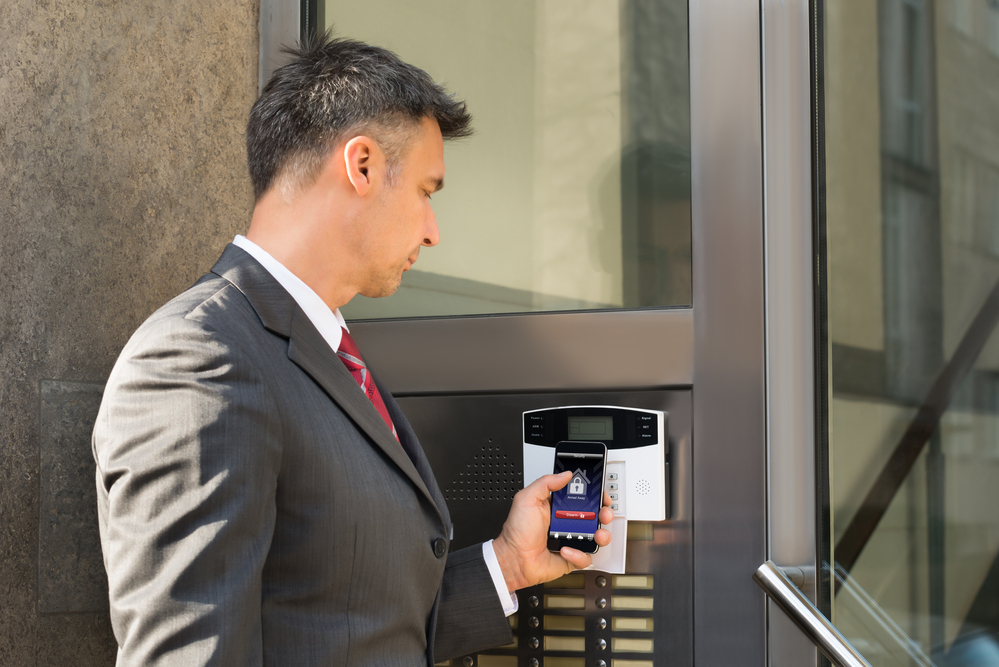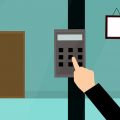There are many different types of access control systems, but they all serve the same purpose: to restrict access to a certain area or resource.
Access control systems may use physical barriers, such as doors, gates, or turnstiles, or it may use electronic means, such as card readers or fingerprint scanners. The system may be as simple as a lock on a door or as complex as a multi-layered system that includes CCTV cameras, security guards, and electronic keypads.
No matter the level of security, all businesses and organizations need some form of access control.
The most basic access control system is a keypad entry system. This system uses a code that must be entered in order to gain access to a certain area. Keypad entry systems are often used in residential applications, such as gated communities or apartment buildings.
More sophisticated access control systems use biometric scanners. These scanners read a person’s unique physical characteristics, such as their fingerprint, iris, or hand geometry. Biometric scanners are often used in high-security environments, such as government buildings or military facilities.
No matter what type of access control system is used, it is important to remember that these systems are only as effective as the people who use them.
In order to properly secure an area, all employees and visitors must be trained on how to use the system. Additionally, access control systems should be regularly tested and updated to ensure that they are working properly.
There are 10 critical factors to consider when choosing an access control system:
What is the purpose of the system?
The main purpose of an access control system is to ensure that only authorized personnel have access to a particular area. The system may be used to protect sensitive areas, such as laboratories or server rooms, or it may be used to control access to an entire building. The system may also be used to track employee movement or to monitor visitors.
Be clear about what you need the access control system to achieve.
Who will be using the system?
There are a few different ways to identify who needs to use an access control system. The first step is to identify the areas or resources that need to be protected.
Once you have a list of these areas or resources, you can then identify the individuals who need to access them. This can be done by looking at job descriptions or by speaking to the individuals themselves.
Once you have a list of the individuals who need to access the protected areas or resources, you can then start to look at the different types of access control systems that are available.
How much control do you need over who has access to what?
When it comes to security, one size does not fit all. The amount of control you need over who has access to your building depends on the type of business you have, the products or services you provide, the level of security you require, and your budget.
There are a number of factors to consider when determining how much control you need over who has access to your building.
The type of business you have
If you have a business that deals with sensitive information or high-value items, you will need to have more control over who has access to your building. On the other hand, if you have a business that is not as sensitive or does not deal with high-value items, you may not need as much control.
The products or services you provide
If you provide products or services that are sensitive in nature, you will need to have more control over who has access to your building. On the other hand, if you provide products or services that are not as sensitive, you may not need as much control.
The level of security you require
If you have a business that requires a high level of security, you will need to have more control over who has access to your building. On the other hand, if you have a business that does not require a high level of security, you may not need as much control.
Your budget
The amount of control you need over who has access to your building will cost money. If you have a limited budget, you may not be able to have as much control as you would like. However, if you have a larger budget, you will be able to have more control.
What is your budget for the system?
When it comes to access control systems, the budget is often one of the most important considerations. There are a few different ways to identify the budget for an access control system, and the best approach will often vary depending on the specific needs of the business or organization.
Within the organization
One of the first places to look when trying to identify the budget for an access control system is within the organization itself. Many times, there will be a department or individual responsible for managing the budget for security-related items. In other cases, the budget may be included in the overall operational budget for the organization.
Vendors that specialize in access control
Another approach is to contact vendors that specialize in access control systems. These vendors will often have a good understanding of the costs associated with different types of systems. They can also provide helpful advice on which type of system would be the best fit for the organization, based on the budget that is available.
Professional security consultant
Finally, it is also possible to consult with a professional security consultant. These individuals have a wealth of experience in designing and implementing access control systems. They can provide invaluable insight into the different options available, as well as help to identify the most cost-effective solution for the organization.
No matter which approach is used, it is important to remember that the budget for an access control system will vary depending on the specific needs of the organization. As such, it is important to work with experienced professionals to ensure that the system meets the unique needs of the business or organization.
How complex does the system need to be?
In order to identify how complex an access control system needs to be, you will need to consider a few factors.
- Size of the facility. A small facility will not need as complex of an access control system as a large facility.
- Type of facility. A facility that houses sensitive information will need a more complex system than a facility that does not.
- The number of people who will be using the system. A system with a large number of users will need to be more complex than a system with a small number of users.
- Level of security that is required. A facility that requires a high level of security will need a more complex system than a facility that does not require as high of a level of security.
Once you have considered all of these factors, you will be able to identify how complex an access control system needs to be.
What level of support will you need for the system?
When it comes to access control systems, the level of support you’ll need will vary depending on the system itself and your organization’s needs. However, there are a few general things to keep in mind when it comes to support for access control systems.
- Make sure that you have someone who is familiar with the system and how it works. This person will be responsible for managing the system and keeping it up-to-date. They should also be able to troubleshoot any issues that may arise.
- Have a plan in place for how you’ll handle updates and upgrades to the system. This includes both software and hardware updates. It’s important to have a system in place so that you can keep your access control system running smoothly and efficiently.
- Make sure that you have a way to contact support if you have any questions or problems. This could be through a phone line, email, or even live chat. Having someone to help you with your access control system can make a big difference in how well it works.
How often will the system need to be updated?
In order to ensure that your security system is up-to-date, you should check the control system regularly. Here are some signs that it may be time to update your system:
- There are new employees who need access to the building.
- You have recently changed the locks on the doors.
- There has been a security breach, or attempted security breach.
- You have added new security features, such as cameras or motion detectors.
- You have made changes to the building, such as adding an extension.
If any of these things have happened, it is probably time to update the access control system. This can be done by adding new cards or keys for employees, or by changing the code that opens the door.
Type of facility
The type of facility is also an important consideration when determining how often to update an access control system. A high-security facility, such as a military base or a nuclear power plant, will need to update its access control system more frequently than a low-security facility, such as a retail store.
Level of security required
The level of security required is also an important consideration. A facility that requires a high level of security, such as a bank, will need to update its access control system more frequently than a facility that requires a low level of security, such as a residential home.
Frequency of change
The frequency of changes to the facility is another important consideration. A facility that undergoes frequent changes, such as a construction site, will need to update its access control system more frequently than a facility that does not undergo frequent changes, such as a museum.
What are the risks if the system is not used properly?
There are many risks associated with not using an access control system properly. These risks can be divided into three categories: physical, logical, and administrative.
Physical risks
Physical risks include unauthorized individuals gaining access to physical resources, such as buildings, rooms, equipment, or data.
Logical risks
Logical risks include unauthorized individuals gaining access to digital resources, such as files, applications, or networks.
Administrative risks
Administrative risks include unauthorized individuals gaining access to privileged information or functionality, such as passwords, account settings, or sensitive data.
Each of these risks can have serious consequences for individuals, organizations, or society as a whole. For example, physical risks can lead to theft, vandalism, or even terrorism. Logical risks can lead to data breaches, identity theft, or system downtime. Administrative risks can lead to fraud, corruption, or misuse of power.
To mitigate these risks, it is important to use access control systems properly. This means using them to limit access to physical and logical resources to authorized individuals only. It also means using them to monitor and track access to those resources.
When using access control systems, it is important to keep the following in mind:
- Use strong authentication methods, such as two-factor authentication, to ensure that only authorized individuals can gain access to resources.
- Use least privilege principles to limit what individuals can do with resources they have access to.
- Monitor access to resources and investigate any suspicious activity.
- Keep access control systems up to date with the latest security patches and updates.
By following these guidelines, organizations can minimize the risks associated with not using access control systems properly.
What are the consequences of someone gaining unauthorized access to the system?
If someone gains unauthorized access to the access control system, the consequences can be serious. They may be able to bypass security measures, gain access to sensitive data, or even cause damage to the system. In some cases, they may also be able to impersonate authorized users.
Risk assessment
The best way to identify the consequences of someone gaining unauthorized access to the access control system is to perform a risk assessment. This will help you identify what potential risks exist and what the potential impact of those risks could be. Once you have identified the risks, you can put in place measures to mitigate them.
Some of the measures you can take to mitigate the risks of unauthorized access include:
- Implementing strong authentication measures, such as two-factor authentication
- Restricting access to sensitive data and systems
- Monitoring access activity and auditing access control logs
- Putting in place incident response plans in case of unauthorized access
By taking these measures, you can help to protect your access control system from unauthorized access and the potential consequences that could come with it.
Is the system compatible with other systems that are already in place?
In order to determine if an access control system is compatible with other systems that are already in place, it is important to first understand what types of access control systems are available. The most common types of access control systems are card-based, PIN-based, and biometric-based.
- Card-based access control systems use physical cards that must be presented in order to gain access to a secured area.
- PIN-based access control systems require the use of a personal identification number (PIN) in order to gain access to a secured area.
- Biometric-based access control systems use physical characteristics, such as a fingerprint, to gain access to a secured area.
Once you understand the types of access control systems available, you can begin to determine if the system you are interested in is compatible with other systems that are already in place. To do this, you will need to know the specific details of the other systems that are in place. For example, if you are interested in installing a card-based access control system, you will need to know if the other systems in place are compatible with card-based systems.
If you are unsure of the compatibility of the access control system you are interested in, it is best to consult with a professional. A professional will be able to assess the other systems in place and determine if the access control system you are interested in is compatible.
Conclusion
When it comes to choosing an access control system, there is no one-size-fits-all solution. You need to carefully consider your specific needs in order to choose the system that is right for you.












